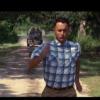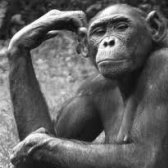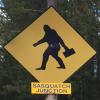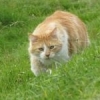Leaderboard
Popular Content
Showing content with the highest reputation on 04/02/2014 in all areas
-
Hey Kyle, it is cool to see others taking an interest in the subject , there is several threads in the ,, In The Field ,, section of the forums that have information on tested and untested gear ranging from thermal cameras to batteries { all manner of tech really } and links to where you can get them at a really good price. One for example that may be of help to you is this thread. http://bigfootforums.com/index.php/topic/36108-high-end-research-gear-and-equipment/ As for tips for the field here are few of the important ones. Avoid using white or bright light at night as much as possible, a creature with large eyes that is able to move around in complete blackness has sensitive eyes that adjust to light conditions, hitting them with light or even turning a light on to the ground nearby could keep them back and maybe even cause avoid you and your group. the reports reflect this as well , the spot light or headlamp came on and the activity was over. Small camp fires in a pit do not seem to be as much of an issue. Be mentally prepared for a situation, out in the dark every sound can translate to sasquatch in your mind if you let your imagination take off, if something happens you need to remain calm and collective with your group and take a moment to think about what you may be experiencing. The mind is you biggest enemy and aid out in the dark forest being that it is instinctual to over react to situations out of self preservation { it is a survival mechanism } so just keep this in mind and do your best to be avoid jumping to conclusions. Be skeptical of what you experience. Document everything, I can't stress this point enough, many do not realize that recording data from the field is in a sense giving you the ability to go back over what you found or heard with a fine toothed comb and dissect the event to better learn from it, also it gives you the ability to share a sound or track photo so you have more than just a cool story. The top 4 things you should record daily are audio, photos/video of anything noted of interest with measurements, environmental information and your groups activities. Do not tell people in town or the area what you are doing or where, the last thing you want is to have some people out there helping you hear bigfoot calls LOL. Be casual and interesting, tell jokes around the fire and roast hot dogs or what ever you think they would enjoy watching, dressing up in camo and stalking around like a predator or hunter may put them on high alert and cause them to stay away. Take into consideration how they view you and what you are doing. Give them the ground, when you position a camp make sure that you give them the advantage, do what ever you can to give them observation areas and escape routes. Think like ,, if I wanted to sneak in and watch that campsite ,, how would I do it quietly and safely ?? Big stumps, trees, burms and dips in the terrain are great areas to peak over out from to watch campers. If you need any information on documentation such as data sheets, audio recorder or camera info feel free to PM me, I wish you good luck and I look forward to seeing your video/documentary. ,,,Nathan.2 points
-
This summer a buddy and I (maybe plus one more if we can convince his wife lol) are going to Ape Canon out near Mt St Helens to look for big foot for 5-7 days. We are experienced hikers and have been out in the "bush" for trail hikes and what-not on a yearly bases. I have been doing as much research as I can on the subject usually with youtube videos up while working or reading websites, indian legends are my favorite. and so has my buddy. (side note: Native American names for sasquatch are crazy translation http://www.sasquatchresearch.net/sassynames.html The Cannibal Demon!?!) We are normal guys that like to goof around and were thinking about making a documentary maybe a kickstarter to try and get some funds to get better camera equipment. We want to do a bunch of interviews of people with sitings in the area and make the documentary about the journey of the "hunt" and of the people that have experienced something on our way out there. Of course we goof around on each other all the time so most likely it will be on the lighter side of bigfoot documentaries... ok here is a dumb video we put together. I know prbly bad idea to share on first post... but what the hell. http://youtu.be/pmyYAJKBJNc Its funny to me. and no its not how the documentary will be haha.. We are taking it serously but were not serious people so we will be having fun with things. and yes this is a bad video haha but we couldnt stop laughing at each other. Anyway I am terrified from doing more and more research on the area. Like the only known deaths from bigfoot are in this area(from what I have found) or have you seen the video outside that guys tent? If i saw that I dont know if I would ever go back in the woods! I am still a slight skeptic, maybe because I havent experienced anything for myself, but we are going to spend 5 days deep in the woods looking for a smart monster that has a ton of sitings. Thats Terrifying! haha ah well. Any pointers would be awesome. We have started a list of things we want to try while were out there to get some sightings. We could use help with: Is there a place to rent good equipment like trail cams or other cameras and mics? We want to make the money stretch for best possible chance of sitings. Ideas on how to get sitings (besides the simple things like tree knocking, leaving food out, or playing recordings. we already have plans for that ) People in the area that we can interview (Near Denver, Salt Lake City, Ape Canon, Bend,or Portland) Finding a full version copy of this https://openlibrary.org/books/OL14650749M/Washington_environmental_atlas Excited to post in the forums and for the trip this July. I will click around and probably find what I am looking for but just wanted to share my story with the forum and couldnt wait. Cheers, Kyle1 point
-
Seriously, did you think I needed telling that? When it's the point I've been making all along?1 point
-
That's my general scheme though I take it a little further. There's really only one person I trust with the specifics of my plans. That person lives a ways away. I create a folder in Google Earth, create placemarks for the key locations related to the trip with some explanation, use the measuring tool in path mode to draw out the routes I expect to use, save that off in a folder, and send it in an email along with a description of the trip (at least as planned) and what sort of things might lead me to deviate from plan and in what way. If I don't come back, that friend, who is my check-in, can send that to law enforcement / search and rescue here when reporting me missing and they'll have as good an idea of what I was going to do as I did when I left the front door. Hope I never need it. Hope if I do, I have a good story (and some pictures for my friend) to show for it. MIB1 point
-
@Coonbo - very impressive!!! Is your end goal to prove the species existence? And, if you don't mind, can you share with us what sort of photographic, audio, and 'other' evidence you have gathered? Obviously, with your years of investigating these things, please provide the cliff notes!! (sorry to derail) Thank you!1 point
-
One thing the math ignores is the action of the creature itself. A significant difference between bears and BF is that BF seems to have a reason why it does not want to be seen and is apparently actively doing something about it. Bears don't seem to care, for example don't really mind if the occasional infrared flash allows them to be seen on a trail cam. If we accept that BF is motivated to stay out of our sight, and also has the smarts to make that happen (and can see the infrared activity of trail cams), there could be a lot more of them than there are bears and we would be right where we are right now. I think as humans we exercise a great deal of hubris when comparing ourselves to other creatures- we make assumptions that don't hold up because we always assume that we are the smartest thing ever. But what if we aren't, and the smartest thing on the planet really does not want to hang out or sacrifice itself for that thing that we call 'science'?1 point
-
There's nothing wrong with scientific method until it becomes religion and closes your eyes to the very questions that should be asked merely because science can't find a way to answer them. It's an important tool, but it's JUST a tool. When science becomes dogma it stops being science. Evidence that is outside current explanations should not be discarded or dismissed. I should be set aside at times in its own "hmmm bucket" but we should go back to it time to time to see if our evolving understanding now accounts for part of it AND whether looking at it again creates new understanding that escaped us before. It's a process, not an event. MIB1 point
-
In Dr. Meldrum's "Sasquatch: Legend Meets Science", Chapter 10 is entitled "Sound Off: Vocalizations". It provides a wide range of information on primate vocalizations, including information on infrasound as used by many known animals. It also covers primate physiological adaptations that may, if present in Sasquatch, account for the possibility of infrasound as a component of their vocal repertoire.1 point
-
1 point
-
A couple of interesting CBC Radio programmes covering the relationship between Sasquatch and Canadian First Nations peoples have been broadcast over the past year. Native interpretations of Sasquatch are varied and complex from region to region. Most traditions fear Sasquatch. For example, among the Cree of Northern Ontario, Squatchy is sometimes regarded as the monster ordinary people have become after turning to cannibalism. In this case the folklore is a censure warning people never to eat human flesh. The omen of bad luck also commonly accompanies sightings of BF after which a cleansing ceremony is often required. Elements of the supernatural such as shape shifting are part of the mix. Also present is the notion that Sasquatch are disacculturated people who left their tribes, for whatever reason, to live in the bush on their own. They steal and eat children, capture young maidens, disrupt trap lines and generally harrass the Native folk. From flesh and blood creatures to feral humans to supernatural shape shifters, Sasquatch fills many different roles in Panamerindian Native culture and world view. - Dudlow1 point
This leaderboard is set to New York/GMT-05:00








